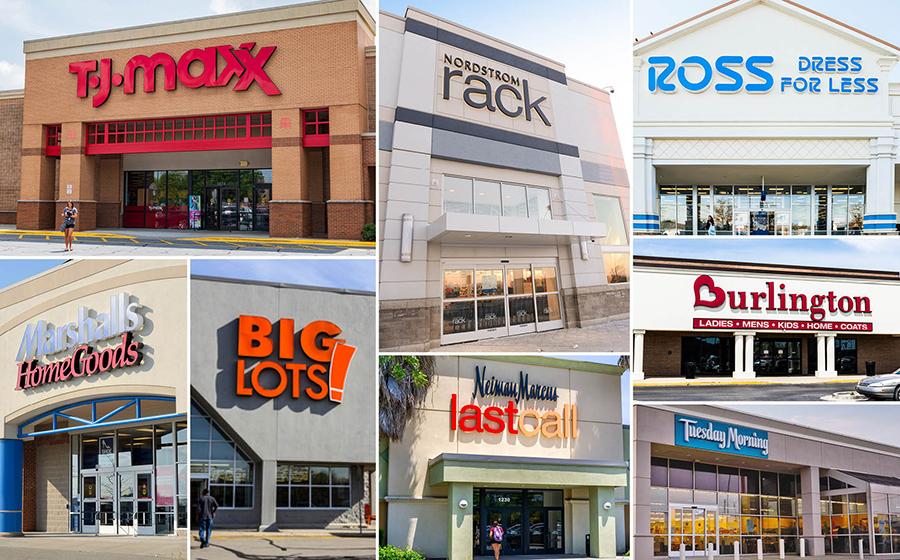Is Off-Price falling off? Don\’t believe it. In the past week or so there have been scattered reports that would seem to indicate the off-price retailing category – the only segment of physical retailing that has defied the trends and continued to grow – was finally having its day of reckoning and that the glory days were ending.
And while the numbers from the giant in the business – TJX – have indeed not been as glorious as they had been and other players in the space have slowed down, to read too much into this is both misleading and inaccurate.
That\’s because the off-price channel remains far and away the best space in in-store retailing and the real thing that\’s going on is not a slow-down, but a shake-out. Think about it: Can you name any other national retail channel for general merchandise goods – other than apparel — where there have been so many players still viable and expanding? The mass merchant discount field is essentially down to two companies. Same for do-it-yourself home improvement, office supplies and warehouse clubs. Some classifications, like consumer electronics, books and bed and bath and housewares home furnishings are all down to just one major national retailer.
Off-Price Acceleration
But off-price is different…very different. The TJX nameplates – TJ Maxx, Marshalls and HomeGoods being the largest – represent the biggest entity in the space. But one tier down, you have Ross Dress for Less (and its dd\’s discount division), Burlington, Tuesday Morning, Christmas Tree Shops, Big Lots (depending on how you choose to define it) and up and comers like Ollies.
Then there are department store-based formats, from Macy\’s Backstage and Nordstrom Rack to Saks Off 5th and Neiman Marcus Last Call.
And there\’s Stein Mart and Gordmans that may or may not be off-pricers…but are closer to that format than pretty much any other. That\’s a lot of stores.
And if there\’s one thing that has been a constant in modern American retailing history it\’s that it\’s a war of attrition and not all of the current combatants are going to survive. It\’s this overabundance of retailers that is the reason we\’re seeing slowing performances by individual players. The pie continues to grow, just not at the rate to absorb all of the additional capacity from stakeholders who continue to expand faster than the market itself. Between the major players, there may be as many as 500 new off-price stores opened over the past 12 to 18 months and that\’s just too much for this sales rate to keep pace.
Winner Take All?
So, who are going to be the winners in the off-price space? Given the strength of the TJX banners, it would be hard to bet against them. But as TJ Maxx and Marshalls start to top out their geographic footprints, there will no doubt be fewer of their new stores to come. What you will see is the continued ramping up of Home Goods, a process that when completed, will double the number of its locations from just a few years ago, edging closer to 1,000 stores. Its new little kid sister Home Sense is just getting started and still has less than two dozen units. As its format gets set don\’t be surprised to see a major expansion of this nameplate either, perhaps creating twin home brands much as the company maintains twin apparel franchises.
Ross is not going to slow down either and it is clearly positioned to be the solid number-two in the channel behind TJX. It has lots of upside potential, particularly with its dd brand, which has been underdeveloped so far. And who\’s to say it won\’t open a home-specific brand, too?
In the department store spin-off lane, the commitment Macy\’s is making to Backstage – and the ongoing softness in its core operation – seem to signal that it will continue to put a lot of emphasis on the off-price space, in free-standing stores but increasingly so as areas within existing full-line stores.
Its major competition from department store brands will be Nordstrom. Even though its business has slowed down considerably over the past year or two, it has the base to sustain the format going forward.
That\’s more than you can say about Saks, which has closed stores and indicated it may shut more. And Neiman\’s is severely restrained by its balance sheet and can\’t really focus on off-price.
Saks and Neiman may be part of this attrition process as will some of the other banners currently operating.
Burlington is on a hot streak but old-timers will remember the bad times that store has endured and wonder if they can return. Tuesday Morning has certainly had more than its fair share of problems and one has to wonder about its long-term prospects given its track record.
The others? Some could live on as niche specialists or fly beneath the Big Boy radar. But some won\’t. For all off-pricers, the real challenge will be how to incorporate online into their operations. The format doesn\’t lend itself to e-commerce, yet that is the way more and more shoppers are buying. Deep pockets, smart management and patience will all be required, three commodities not all the current class of off-pricers possess.
In the meantime, there will be more signs that off-price has peaked and is falling victim to what is consuming all physical retailing. The pundits and so-called experts will have plenty to say about all of this but most will miss the point. Yes, off-price is not exploding the way it used to. But it\’s not imploding by any means either. As with any other business segment, the best-in-class will endure and prosper.
Off remains very much on.
Warren Shoulberg is a business journalist who started and was the founding editor of a publication called Off-Price Retailing in 1975. He will tell you, if you were to ask, that he was ahead of his time.





